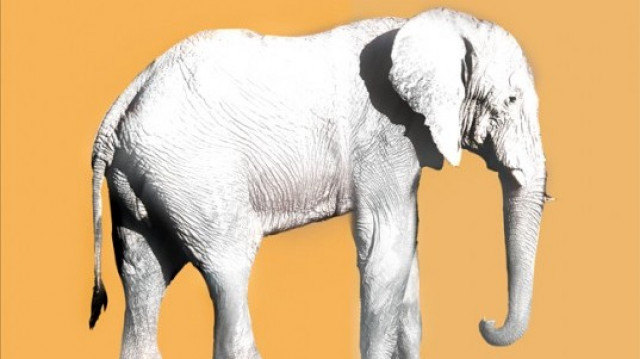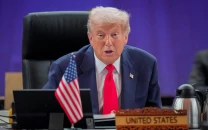Pakistan Steel Mills vs the Economy

Pakistan Steel Mills vs the Economy
The government never realised how much money a project as enormous as the Pakistan Steel Mills Corporation could bleed from the country if left in inept hands.
The government established the Pakistan steel mills corporation thinking that that economic growth would not be possible without a self sufficient iron and steel making plant.
They believed that depending on imported steel would cost the country too much. How wrong could they have been? They would never have believed that it would come to such a point that the Steel mills would ask for steel imports to be banned so that it could sell its steel at a higher price.
In May 2006 Pakistan Steel Mills was privatised. This could have been one of smartest things that the government of General Musharraf could have done.
The consortium involving Saudi Arabia-based Al Tuwairqi Group of Companies submitted a winning bid of $362 million for a 75 per cent stake in Pakistan Steel Mills Corporation (PSMC) at an open auction held in Islamabad. Rs21.6 billion or $362 billion was paid by Al Tuwairqi, Russian Magnitogorsk and local brokerage Arif Habib securities to take control of Pakistan Steel mills. This amounted to Rs16.8 per share.
We could have been saved but justice had to prevail. The privatisation was reversed. This happened after a wide spread hue and cry for action from everyone; mainly steel mill employees and unions who feared they would be fired because the new management would figure out that they were of absolutely no use.
The verdict was delivered on August 8, 2008. They said that the selling process of the Steel Mills was hasty and ignored profitability. But then again hindsight is always 20-20. The scene was set and the $362 million transaction with the Russian- Saudi-Pakistan investors was no more.
Privatisation
Nobody ever bothers to verify numbers because numbers don’t lie. The argument against the sale of the steel mills was that it was being sold too cheaply there were also rumours that people were benefitting on the side from the transaction.
Opponents of the sale claimed that market analysts had estimated the price of a 75 per cent stake in the mill to be much higher than the Rs21.68 billion, that it was eventually sold for.
They never bothered to take into account the companies liabilities, the kind that are imminent when the management is completely government appointed, the kind that bring about losses every year.
Analysts said that realistically the value of liabilities for the mill at the time must have been huge because the mill has been incurring losses and hemorrhaging money, tens of billion rupees of it, for many years.
The money that would have to be put into the Steel mills to make it viable again was never taken into account. They never considered the economic benefit of a non-government firm putting money into the mill to run it in an efficient way so that it could stop incurring losses and produce more steel. Even if it did not benefit the government monetarily, the industry would still benefit from the increased steel production.
So far the government has not been able to stop the steel mills from being a white elephant. There is no way that the government would be able to spare the money required in its current financial position to fix the steel mills problems.
Pakistan’s fiscal debt went through the roof long before the privatisation transaction of the steel mills and still nobody thought to question the economic viability of not privatising such a large hole in the government’s pocket. The most basic of benefits of such a deal would have been that it was foreign investment and it could have attracted more.
It would have made the public steel mills monopoly private. Then the competition regulating body of Pakistan would not have as much trouble dealing with because it would not have belonged to the government and vested interests would have been fewer.
Losses
Pakistan Steel Mills Corporation (PSMC) has lost and cost the government a huge amount of money so far.
Its annual losses stood at Rs9.33 billion and it needed to pay back Rs19 billion worth of loans up till 1999.
Then it suffered a net loss of Rs19.5 billion in 2008-09. In just six months, it lost Rs5.622 billion during the July 2009 to January 2010 period.
The ECC was forced to approve a Rs10 billion bailout package for Pakistan Steel Mills in January 2010 to overcome its “acute financial crunch”. Pakistan Steel Mills said that the Rs10 billion was ‘adjusted in the loan repayment.’
Now PSM wants Rs25 billion more, and has again requested the ministries of industries and production and finance for a bailout package for running the mill efficiently and help it overcome its financial liabilities. They say that the mill is currently running at 30 to 35 per cent production capacity. In lieu of this the privatisation back in 2006 just keeps on getting more and more attractive.
Despite all its problems, the mill is a paradigmatic employer and would rather see itself run into the ground than mistreat its long standing employees. In the midst of all the troubles that it is facing, the mill started issuing letters confirming their jobs.
But these are just the workers; other employees of the mill take house rent from the company worth billions of rupees while residing in the official residences that the organisation provides. The double benefits on accommodation were enjoyed by many people from the chairman to officers at junior posts according to the Public Accounts Committee (PAC). The former PSM chairman also took Rs2.886 million house rent while using his official residence.
Apparently there were some serious financial problems other than the ones that had always been plaguing the company. It was discovered that the Pakistan Steel Mills was in serious trouble after the Competition Commission of Pakistan (CCP) undertook a detailed investigation of it in 2009.
The organisation was left in serious debt up to Rs22 billion, possibly more. The CCP discovered that the Pakistan Steel Mills had run its factories into debt by selling exclusively to the Abbas Steel Group at well below the market price while other competing vendors were not sold to at all.
Initial allegations accused the, then Chairman of Pakistan Steel of having a strong bias towards the Abbas Steel Group (ASG). They were accused of allocating all the billets being produced by Pakistan Steel Mill to be sold exclusively to the Abbas Steel Group at rates well below the market price while other vendors, who had actually made complete payments in advance at the official market price, were left stranded and ended up literally running their factories into debt and ultimate closure.
Pakistan Steel gave Abbas Steel exclusive rights to all its production and discounted prices after Moeen Aftab Sheikh was appointment Chairman of Pakistan Steel by the Pakistan Peoples Party.
The CCP’s detailed investigation found that the owner of Abbas Steel Group, Riaz Lalji was responsible for the Steel Mill crisis.
Domination
Pakistan Steel Mills does not sell its own steel: it outsources that task to steel dealerships that then go on to distribute the steel throughout the country. The commodity mill has strict guidelines on how much steel it can sell to each dealership.
In theory, at least, the mill is supposed to sell roughly the same amount of steel to each dealership. It does so in order to avoid giving a single player monopolistic power to corner the steel market. But, according to informed insiders, that is not how the system works in reality.
According to a steel dealer familiar with the matter, several enterprises register multiple dealerships under the names of their relatives and friends and then bid for steel through multiple licenses, in effect circumventing the rule designed to prevent the rise of monopolies. The mill makes no effort to regulate this sort of behaviour and generally shrugs off the responsibility of ensuring that rules are followed.
“Since these people have virtual control of the steel production in the country, they can charge whatever they want for their wares,” said one dealer. “They can hoard it in bad times, they can benefit by selling it to one person over the other.”
The rate at which the steel mills sell to the dealership is usually stable and fixed but the dealerships are free to sell at whatever price they want, constrained only by the economic forces of supply and demand. Given the fact that the demand for steel in Pakistan outstrips local supply by a factor of five times, the dealerships have enormous market power.
Nevertheless, according to industry experts, Pakistani steel prices do tend to fluctuate with international prices, since most of the steel used in the country is still imported from abroad. When steel prices fell over the last few months, dealerships began hoarding large amounts of steel in order to sell once prices have recovered.
Some observers feel that the decision by the steel mill to outsource its marketing and distribution to dealerships creates an unnecessary middle-man that only serves to act against the public interest.



















COMMENTS
Comments are moderated and generally will be posted if they are on-topic and not abusive.
For more information, please see our Comments FAQ